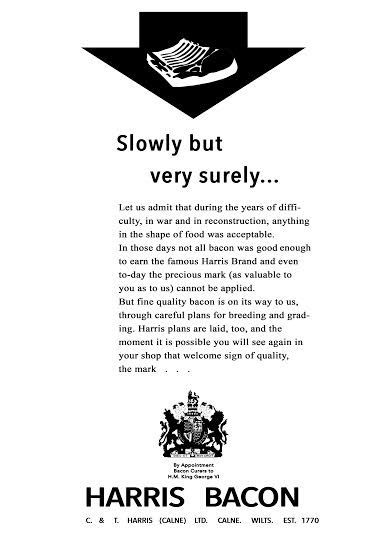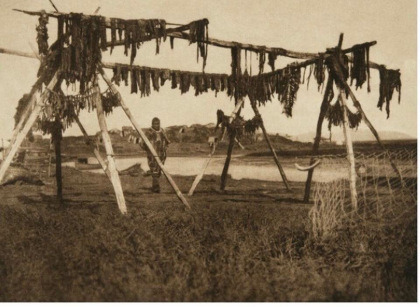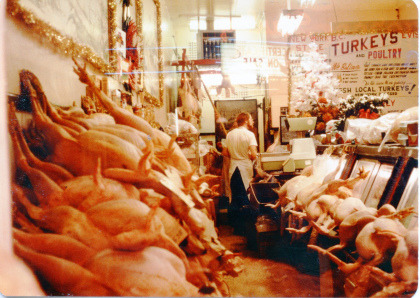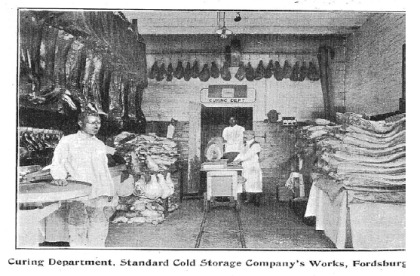#Collin Snoek
Explore tagged Tumblr posts
Photo

Swiss Cottage Central Library, Hampstead (1964) by Basil Spence Bonnington & Collins.
Library and Swimming Baths built as the first part of a never completed civic centre for Hampstead. The Swimming Baths were later demolished along with a William Mitchell mural over the entrance.
Image from RIBApix. Taken by Henk Snoek
53 notes
·
View notes
Text
Stockyard photos from Chicago
Images from the Union Stock Yards, Chicago, USA, and pork abattoir’s, from The Modern Packing House, by Nickerson and Collins Co., Chicago, 1905 and 1920.
Ham pump from the 1910’s
Wiltshire cut c 1920
Union Stock Yard, Chicago, USA, C 1920
Union Stock Yard, Chicago, USA, C 1920
Pork abattoir, c 1920
Pork abattoir, c 1920
Union Stock Yard, Chicago, USA, C 1920
Entrance to the Union Stock Yard, Chicago, USA, C 1920
Photos from Harris Bacon, Wiltshire, England
Harris photos from old newspapers and redrawn in Cape Town.
#gallery-0-21 { margin: auto; } #gallery-0-21 .gallery-item { float: left; margin-top: 10px; text-align: center; width: 100%; } #gallery-0-21 img { border: 2px solid #cfcfcf; } #gallery-0-21 .gallery-caption { margin-left: 0; } /* see gallery_shortcode() in wp-includes/media.php */

#gallery-0-22 { margin: auto; } #gallery-0-22 .gallery-item { float: left; margin-top: 10px; text-align: center; width: 100%; } #gallery-0-22 img { border: 2px solid #cfcfcf; } #gallery-0-22 .gallery-caption { margin-left: 0; } /* see gallery_shortcode() in wp-includes/media.php */
Harris Bacon photos, courtesy of Susan Boddington, curator of the Calne Heritage Centre.
#gallery-0-23 { margin: auto; } #gallery-0-23 .gallery-item { float: left; margin-top: 10px; text-align: center; width: 50%; } #gallery-0-23 img { border: 2px solid #cfcfcf; } #gallery-0-23 .gallery-caption { margin-left: 0; } /* see gallery_shortcode() in wp-includes/media.php */
Ancient photos from Germany
An old pic re-published in the doctoral dissertation of Klaus-Dieter Baja, University of Hamburg, on the changing face of the butches profession.
Vintage photos by Edward S Curtis

Drying Whale Meat – Hooper Bay (The North American Indian, V. XX. Norwood, MA, The PLIMPTON Press). Artist, Edward S Curtis.

Drying Meat, Flathead, 1910 – Hand colored vintage photogravure – 5 1/4 x 7 1/4 inches plate. Edward S. Curtis. From nygardgallery.com

An iconic photo by Curtis, Edward S., 1868-1952, created c1908 November 19, Two Dakota Indian women hanging meat to dry on poles, tent in background. Published in: The North American Indian / Edward S. Curtis. [Seattle, Wash.] : Edward S. Curtis, 1907-30, v. 3, p. 96.
Smokehouses

Meat Curing and Smokehouse – Built in Goria after plans by the United States Dep of Agriculture. Photo – 1919 from Woodford County Journal (Eureka, Illinois), 20 Jan 1919, p 3.
Photos from Robert Goodrick

About this photo, he writes, “That was the year when we cleaned 900 pieces of poultry — I smelled like a turkey for weeks after :-(”
He says that “The bearded wonder in the center of the photo Quiet Waters Farm is yours truly 1974 I believe :)”
Robert remembers that “this is when ‘butchers’ was ‘real’ butchers 🙂 that Christmas we did over a 1000 birds which included a few ducks, geese, roasting chickens (6lb’ers) as well as a few (true) capons 9/10 lbs) — Largest turkey, if I remember right, was 55 lbs and the smallest was around 7/8 lbs — two of us cleaned the whole lot in about 12 hours”
“My third job in Vancouver British Columbia — My first lasted six weeks as I did not do the right handshake — another story for over a pint — Second lasted about six months as they were pulling the building down, so went down the street and joined this lot — ended up running the place for the owners :)”
How I love these stories!
Laurence Green’s references to Cape food.
From his work HARBOURS OF MEMORY (1969), published by Howard Timmins, Green makes the following references to meat and food recipes. Many of his best stories he got in bars, drinking with old folks and from magazines and old pamphlets he collected from flea markets. He was a journalist and an author and I think, if I recall correctly, at one point wrote for the Cape Argus or Cape Times. His word pictures are priceless. Here are a few nuggets.
The secret curry powder
From The Road to the Harbour he writes, “Hungry seamen paid sixpence for pea soup or fish, a shilling for roast beef or steak. Many generous hosts provided bread, cheese, and pickles free of charge. A favourite meal in many harbour taverns consisted of a plate of mulligatawny soup followed by sosaties and rice, curried fragments of mutton on bamboo skewers. This cost one shilling and sixpence, including a glass of wine.”
Curries of various sorts were favourite everyday meals in the seafaring quarter. If you passed down Waterkant or Bree Street between certain hours there were such pungent aromas of chilies and garlic, mustard oil and onions, that you might have been in Calcutta. Jacob Watermeyer, a Strand Street ship chandler, was the far-sighted businessman who transformed the curry and rice dishes of Cape Town. This remarkable episode brought him and his assistant a fortune. The master of a British sailing ship owed Watermeyer money for stores and he departed without paying the bill. Next time he called, however, the honest captain entered Watermeyer’s shop and announced: “I still can’t pay, but if you care to come down on board my ship I will show you something valuable.” Watermeyer and his assistant lunched in the saloon and were given the finest curry they had ever tasted. After lunch, the captain handed them a list of ingredients and showed them how to mix the curry powder which had made the lunch memorable. I do not pretend to know the exact amount of turmeric, ginger, chilies and other spices that went into the powder; it was a secret recipe. No one could say that it was dominated by this or that condiment. It was a true blend, and compared with the other curry powders of the period it seemed to have an almost magical effect on soups, pumpkin, beans, crawfish or snoek, eggs, chicken and meats. The captain revealed to Watermeyer the whole secret process and gave him a sealed barrel of the curry powder. Watermeyer canceled the debt, three hundred pounds, a substantial amount to write off in those golden days. He put the curry powder on the market in tins and Cape Town flocked to his store to buy more. Here was a powder with just the right bite. It gave a rich, almost mysterious stimulating quality to a thick stew. People glowed and perspired and declared that Watermeyer’s curry powder made them feel cool in the heat of summer. The assistant married Watermeyer’s daughter and inherited the secret. He built a store in Adderley Street far more ornate than the little ship chandler’s shop down on the waterfront. The store has gone but the curry powder survives and is still mixed just as that forgotten sea captain showed Jacob Watermeyer in the Indiaman’s saloon more than a century ago.
Few old people record their memories and I was lucky to hear the curry saga before the origin was lost. When an interesting person dies a whole page of the past is torn away. I am grateful to those who spoke to me and left their most vivid impressions
Picture from the Shambles – leopards and sand sharks
Leopards were still visiting the shambles at the foot of Adderley Street in search of offal when Hinton was a boy. Wharf Square, outside the old mainline railway station, was close to the wharf. The slaughterhouse, built long before the station, supplied meat to troops bound for India before the Suez Canal was built. Shortly after World War II an aged coloured man showed officials the door in this building where he had stood shovelling refuse into Table Bay. So many sand sharks gathered for the feast. that they called the place Haaibaai. Now the shambles has been demolished and the nearest sea is more than twelve hundred yards from Wharf Square.
Polony, existed from at least 1900’s with much older roots
“Butchers prepared fine mutton hams and polonies and these kept fresh in any climate. The polonies were a foot long, one inch in diameter, made of pork and other meats and fat with various spices; they were bound in bundles of twenty-four and sewn up in airtight bladders.”
See my article I did based on Greens description, The Origins of Polony.
Pigs in blankets were served as oysters, wrapped in bacon
About chef Luigi, he tells the following. “So he served “pigs in blankets” (oysters wrapped in bacon and fried) or oysters au gratin, sole and oyster pie, oysters sweated in butter and served on hot fried bread, oyster soufflees, oysters with spinach, grilled oysters and fried oysters chopped and mixed with scrambled eggs.”
From Australia
The country of Australia holds some of the most iconic meat history.
Tim Westwood made me aware of this remarkable video.
youtube
Meat Hangers
Kevin Ahern took these pictures of Petroglyphs National Monuments in Albuquerque, NM, dating to between 800 and 1200 BP with the oldest dating to 2000 BCE. He tells me that the images depict the Yucca bud.
“The uses of this plant are numerous, the least of which today being for textile use. The strikingly tall inflorescence stalks have long fibres in them that can be spun to make (incredibly uncomfortable) clothing, textiles, or rope. Yucca flowers are also edible, and are a deep-fried delicacy in some southern states in the US. Some species of the genus also have edible fruits, but this species isn’t one of them since the fruit walls are made up of very tough plant tissue. (botanicalmusings)
The leaves of this plant (Yucca filamentosa; Adams needle) are also sometimes referred to as “meat hangers” since they are so tough they can pierce meat and can be knotted together to make a ring that can be hung on a tree branch to dry-cured meat.” (botanicalmusings)
The reference to the hanging of meat for curing seems to originate from Small (1933) who recorded that “leaves of all southern species were used by pioneers to make rope and string for hanging up cured meats.” Daniel F. Austin says that he found fishermen in the early 1970s on Great Inagua near the Bahamas still using cord made from Yucca to hang their bonefish to dry. (Austin, 2004)
Yucca to the native tribe, Alabama was called tosiina istatakka (tosiina, from Spanish tocino for Bacon, ist-, it is, atakkaaka, hanging). The name is derived from their use of the sharp point on the leaf and its fibers to hang meat for smoking (Sylestine, et al, 1993) (Austin, 2004)
Further Reading and Reference:
http://botanicalmusings.blogspot.com/2012/08/the-northern-agave-yucca.html
Austin, F. D.. 2004. Florida Ethnobotany. CRC Press.
Old Meat Pictures from Мясо! Мясо! Колбаса
In July 2019 I was looking for old meat processing pictures for the deli stores concept we are launching in Johannesburg. Robert kindly directed me to this amazing facebook site. All photos were downloaded from this site where it was posted by members. I wish to acknowledge them and members of the site as the source.
Chuck Vavra‘s Grandparents
Making sausages
Todd Young’s photos
From South Africa

A photograph from L V Praagh, The Transvaal, and its Mines, 1906, p.321, of the curing room of a cold storage and butcher’s shop shows the importance of this imported European tradition in Johannesburg.

Sheepkraaling in the Karoo. Late 1800’s. From The Rise of Conservation in South Africa – Settlers, Livestock, and the Environment 1770-1950 by William Beinart.
Contributions
Please mail any contributions to [email protected] and help us preserve the rich heritage of our trade.
Pic’s history of meat processing Stockyard photos from Chicago Images from the Union Stock Yards, Chicago, USA, and pork abattoir's, from…
0 notes
Video
youtube
Before this years Chicago street jam the entire Tilt team took a trip to Detroit, Michigan and Cleveland, Ohio. I did the editing and Josh Smukal did the filming.
#tilt scooters#rusted never busted#ralph mcmoran#collin snoek#jon archer#tom kvilhaug#jordan jasa#dylan kasson#issac miller#jona humbel#josh smukal#erik feenstra#detroit#cleveland#michigan#ohio
20 notes
·
View notes
Photo

Kensington and Chelsea Town Hall (1977) by Basil Spence, Bonnington & Collins Partnership.
The last built design of Basil Spence, originally commissioned in 1965, and completed in 1977. The civic centre features offices, halls and meeting rooms grouped around a polygonal courtyard, all in red brick and exposed concrete frame.
Image from RIBApix. Taken by Henk Snoek.
95 notes
·
View notes
Photo


Tilt 2 is out in the web store. Support hard copies and full length scooter films by picking one up.
#tilt 2#tilt scooters#ralph mcmoran#erik feenstra#collin snoek#dylan kasson#jordan jasa#jon archer#jona humbel#tom kvilhaug#issac miller
10 notes
·
View notes
Video
youtube
I did most of the filming and all of the editing for the Tilt 2 trailer.
Tilt 2 is a film that will not only be a breakthrough in the standard of modern street riding, but also a new level of scooter cinema that the community has never seen before. Featuring full parts from Erik Feenstra, Dylan Kasson, Issac Miller, Jon Archer, Ralph Mcmoran, Jordan Jasa, Jona Humbel, and Tom Kvilhaug.
Tilt 2 will premier after the Chicago street jam on August 8, 2015.
#collin snoek#josh smukal#olivia monks#chris martin#erik feenstra#dylan kasson#issac miller#jona humbel#jordan jasa#jon archer#ralph mcmoran#tom kvilhaug#tilt scooters#tilt 2#tilt 2 trailer
10 notes
·
View notes
Video
youtube
The installation and closing reception video of the D.T.D.F. show is up.
5 notes
·
View notes